Decay, Denial, Mystery, and Absurdity mark two Cagey Early works by Intellectual Absurdist Greenaway
DIRECTED BY PETER GREENAWAY/1985 & 1980
BLU-RAY STREET DATE: JUNE 20, 2023/ZEITGEIST FILMS (Via Kino Lorber)
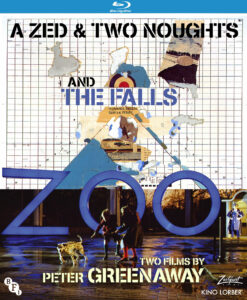
In June of 2023, Kino Lorber released a two-disc set containing two of acclaimed British filmmaker Peter Greenaway’s earliest feature film works. These films are 1985’s A Zed and Two Noughts and 1980’s The Falls, the latter of which might not actually be an official “film” at all. In any case, for the presumed betterment of any who may be compelled towards such renderings, here they both are, presented in fine form and with extras including several Greenaway short films as accompaniment.
A too-openhanded metaphor for various dark absurdities of the human condition, A Zed and Two Noughts (1985), Greenaway’s sophomorically sophisticated second feature proper, wrings innovation from an exhausting and somewhat impenetrable premise. According to its own Wikipedia entry’s introductory paragraph, “the film is a rumination on life, love, bad sex, doubling, man’s mistreatment of animals, artifice v. the life force and the inevitability of birth, death and decay.” It’s all happening at the zoo.
Solidifying Greenaway as one of our greatest purveyors of imagined history and concocted backstory, A Zed and Two Noughts veers in at least three different intellectual directions. An eerily dismal unvisited zoo serves as the film’s setting as well as its metaphorical housing. Within this supposed animal park is the writer/director’s microcosm of humanity. Or so he says. Dark and disturbing and rarely at any real rest, the place proves to be a decidedly warped take on the what’s what and the why & how of everything. But also, Greenaway takes this opportunity to invent a contemporary version of the mostly unknown life of master artist Johannes Vermeer. That, he felt, needed doing.
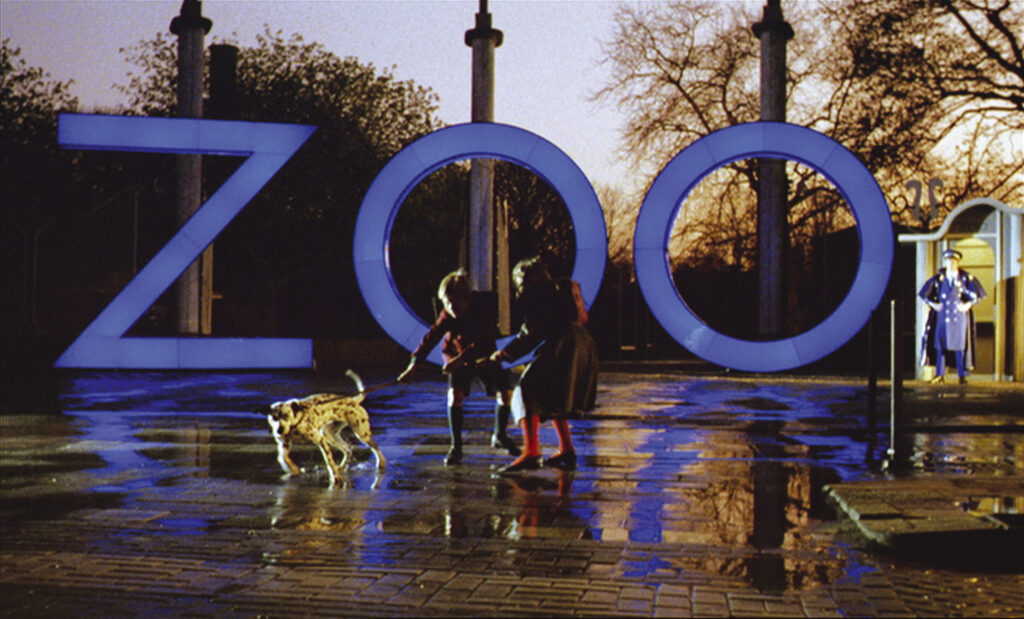
By now you might be saying, “Yes yes, all of that is quite well and good. But Peter, what about the origins of the species?” Hmmm, yes…. For all the icky overt decay of the large number of dead zoo animals (witnessed by the characters and by us in assaultive time lapse slide shows), how life ends really isn’t the question. The mystery has always been how it began. But for anyone who bears witness to Peter Greenaway’s A Zed and Two Noughts, the real question is, what the holy heck are all the life forms doing? Principally and most poignantly, what are the people doing? Oh, the people in this film… Mangled, muggled, hyper focused, horny, and thoroughly insane. In short, your friends and neighbors.
Many of them (including Andrea Ferreol as Alba Bewick, Brian Deacon as Oswald Deuce, Eric Deacon as as Oliver Deuce, Frances Barber as Venus de Milo, Joss Ackland as Van Hoyten, and Jim Davidson as Joshua Plate, f.y.i.) demonstrate outward fascinations with the sexual habits of snails and the liberation of butterflies. When their attention turns to zebras and/or dalmatians, the primary question is, “Is it a black animal with white markings, or a white animal with black markings?” These hapless creatures and plenty of others are subject to such obtuse speculation and sideways theorizing. And there is a lot of that sort of thing.
When characters are not involved in those inquiries, they’re sometimes party to automotive deaths involving animals. Then there’s the amputations, decomposition, and both animal and human demise. The whole film is one big garish, vulgar, and outrageous venture into humanity’s barely contained incongruity among the rest of creation. We stumble, we crash, we fall (Oh wait, The Fall is the other title. No matter…). It’s all quite messy and backward, though carried out with gross entitlement and a putting on of airs. But really… “Zoo”, “ooz”… what’s the difference?
A visual feast for those with a loss of appetite, it’s notable that A Zed and Two Noughts is Greenaway’s first outing with celebrated French cinematographer Sacha Vierny, who’d continue shooting all of the director’s films until 8 1/2 Women in 1999. Ambitious to its own ends, A Zed and Two Noughts is the kind of overstuffed big swing that never had any real chance of coalescing. In the director’s video introduction that is included on the disc as an optional feature, Greenaway doesn’t shy away from A Zed and Two Noughts’ less-than-stellar reception. In his warm and eloquent British manner, he, in a roundabout way, confesses to forcing together three disparate fascinations. To that one may reply, “Just three??”
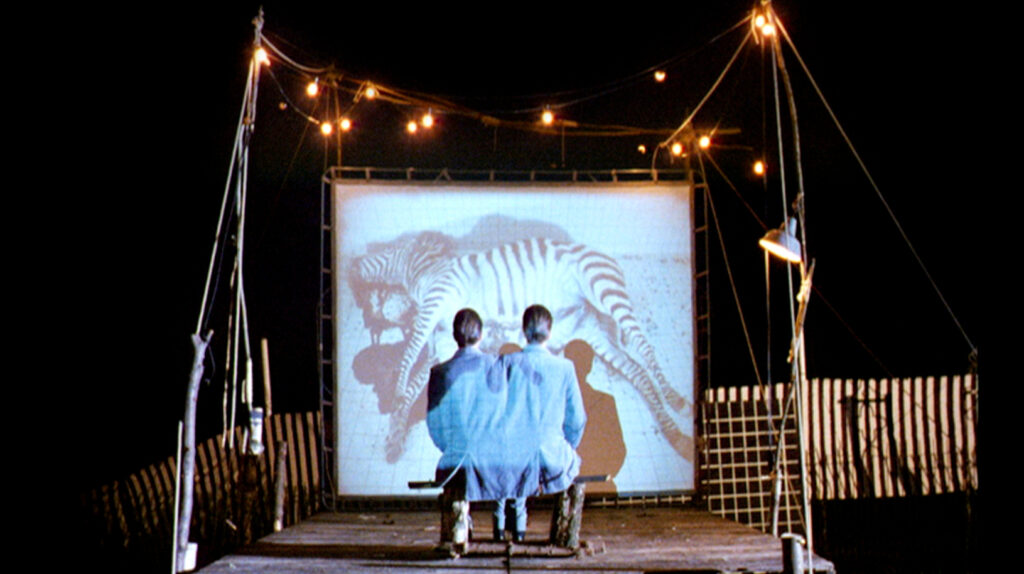
The “bonus” menu of Disc 1 contains two earlier short films by Greenaway, H Is for House (1976, nine minutes), and A Walk Through H (1978, forty-one minutes). Absurdly mundane in their repetitive construction of nature footage and/or elaborate marker drawings and maps, these films are narrated (by an all-business Colin Cantlie) in a witty if also lulling fashion. At the risk of being overly dismissive, I must admit that these Greenway shorts don’t do much for me, and that I struggle to connect with them.
That said, the forty-four-minute Vertical Features Remake (1978) sticks it’s multi-tiered landing with subversive gusto. While not formally dissimilar to Greenaway’s other short works found on this two-disc set and elsewhere, this one, in pushing its fraudulently academic context into obvious absurdity (though remaining straight-faced all the while), is a real wool-puller. Who was Tulse Luper, and why are top academics locking horns over the validity of a remake of his lost film, Vertical Features? It is, after all, nothing more than a rhythmic montage of static shots of verticals in the wild. Fence posts, trees, clothesline stands, more fence posts, more trees, and on and on.
Is Luper’s in-depth study of real-world y-axes truly of some essential vitality, or is it nothing more than a rudimentary film editing exercise? Narrator Colin Cantlie (once again) has the audacity to ask that out loud. It’s a laugh-out loud moment in this driest of dry satires. In Greenaway’s twenty-plus year-old optional video introduction to the film, he mentions that the enigmatic Luper was in the process of being resurrected with his multi-part project, The Tulse Luper Suitcases (2003-2004). If that’s not a selling point for an unconventional undertaking such as that, then I do not know what is.
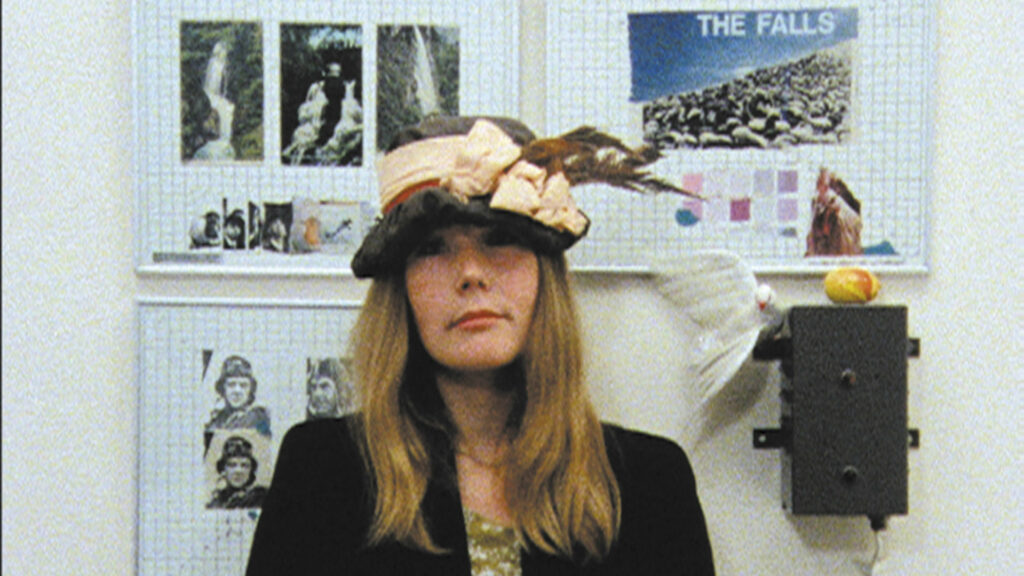
None of that, however, can hope to compare substantively with Greenaway’s sprawling brilliant major ask of a project, 1980’s 185-minute The Falls. The Falls individually catalogs ninety-two victims of a violent unknown event of several years prior known as The Violent Unknown Event (V.U.E.). Playful in spirit but exhausting for its voluminousness, The Falls is more mock news special than movie. Thusly, it is presented in the unaffected just-the-facts narrated style of BBC documentary episodes of the time. Truly, it’s a document of falsehoods; made-up people suffering made-up symptoms of a made-up disaster.
Following the V.U.E., we’re told that each victim experienced varied changes in health, linguistics, and abilities, and have adopted new surnames. Each of their new last names begins with “Fall”: “Tolley Falluger”, “Castral Fallvernon”, “Allia Fallanx”, “Ardenaur Fallater”, and so on. And on, and on, and on. Twin brothers Ipson and Pulat Fallari are portrayed by now-legendary animation subversives The Brothers Quay, Stephen and Timothy. The ever-shifting approaches in presentation touts a plethora of styles and a complex and even frightening multilayered imagination behind it all. Never knowing what’s next every few minutes certainly keeps us on our toes while the many minutes while away.
All ninety-two people are chronicled individually, one at a time, in a numeric order. Some cannot be reached. Many are dead. A few names, it turns out, are listed only by clerical error. Some are shown prior to their later deaths, brought on by their V.U.E. afflictions. Many are compelled to move ‘round and ‘round in circles ad nauseum. A very common question to them is, who is and who isn’t a believer in the responsibility of birds? Because, while never wholly explained, one thing that’s clear is that our fine feathered friends had something to do with the V.U.E. And somehow, the oft-mentioned, never seen Tulse Luper (and at least one of his many suitcases) also figures in.
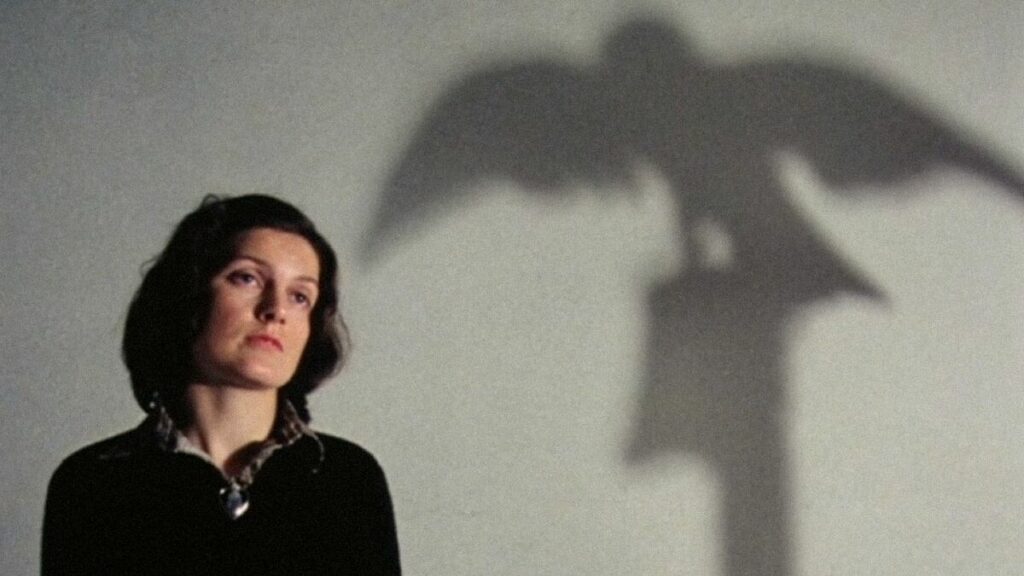
Michael Nyman again provides the score, a repetitive earworm of busy-bee minimalism. Avant-garde tracks by Brian Eno and Syd Barrett also turn up. Whether one considers the expansive experimental deep-dive that is The Falls a bona fide feature film or not (cinephiles seem to consider The Draughtsman’s Contract Greenaway’s “first film proper”)- and I can’t imagine he much cares- it is without question grand early proof of Greenaway’s unrelentingly, uncompromisingly smart approach to creating. To use a more contemporary term, his world-building skills are on full display and then some. Don’t come looking for answers because you won’t get them. But then, Greenaway’s unique internal logic seems to dictate that straightforward filmmaking is for the birds. Indeed, not even Brewster McCloud ever had it so weird.
Once one has summited to The Falls, or even prior to the plunge, one ought view the brief video bonus feature of Greenaway discussing it. Like the other such features on this set, it appears to be about twenty years old, and leaves one with a deceptive confidence about the greater piece in question. Still, better to have this than not. The Falls itself looks and also sounds quite good considering its cobbled-together nature. Stock images, tacked-up stills, photographs, drawings, elaborate charts and graphs, illegible handwriting, conceptual artwork for the film we’re watching on bulletin boards, originally shot film footage (appearing to be 16mm), and whatever else make up the indelibly undefinable marathon experience. In 1980, the notion of the sudden onset of a violent unknown event that afflicts people very differently and leaves society desperate to place a blame for it was absolutely the stuff of wild imagination. Today, it’s one of those things that resonates all the more. All the much, much more. We may not get The Falls, but we do get that.
All in all, what can the experiences of these early Greenaways leave one with? It all only goes to show that the show only ultimately goes downward. The knotty absurdity that fuels both of these offerings is clearly something to be reconned with, albeit in the most unclear of ways. People go around in circles to unknown ends, and any subsequent decay can only be studied for future use. (Don’t ask the particulars such use). A Zed and Two Noughtsand The Falls, though existing in defiance of easy narrative, ethical logic, or moral accessibility, do demonstrate that much. While neither stands among his most potent or even vital film works, Greenaway devotees will want to secure this well-curated two-disc object.

